Document Outline
- Title Page
- Introduction
- Table of Contents
- Series Number Ö Page Number
- Application Notes
- Based LED Questionnaire
- T1(3mm) Sub-Midget Based LEDs
- T1(3mm) Sub-Midget Bi-Pin Based LEDs
- T1-1/2 (4.5mm) Midget Wedge Based LEDs
- T1-3/4 (5mm) Midget Wedge Based LEDs
- T1-3/4 (5mm) Midget Flange Based LEDs
- T1-3/4 (5mm) Midget Groove Based LEDs
- T1-3/4 (5mm) Midget Screw Based LEDs
- T1-3/4 (5mm) Midget Bi-Pin Based LEDs
- T3-1/4 (9mm) Miniature Based LED Lamps
- T3-1/4 (9mm) Miniature Based LED Lamps
- T3-1/4 (9mm) Miniature Based LED Lamps
- T3-1/4 (9mm) Miniature Based LED Lamps
- T3-1/4 (9mm) Miniature Wedge Based LEDs
- T3-1/4 (9mm) Miniature Wedge Based LEDs
- T3-1/4 (9mm) Miniature Screw Based LEDs
- S6 Candelabra Screw Based LEDs
- S6 Candelabra Screw Based LEDs
- T5.5K European Telephone Slide Based LEDs
- T6.8 European Telephone Slide Based LEDs
- T2 ANSI #5 Telephone Slide Based LEDs
- T2 ANSI #2 & #3 Telephone Slide Based LEDs
- T2 #1 Telephone Slide Based LEDs
- LED Color Chart
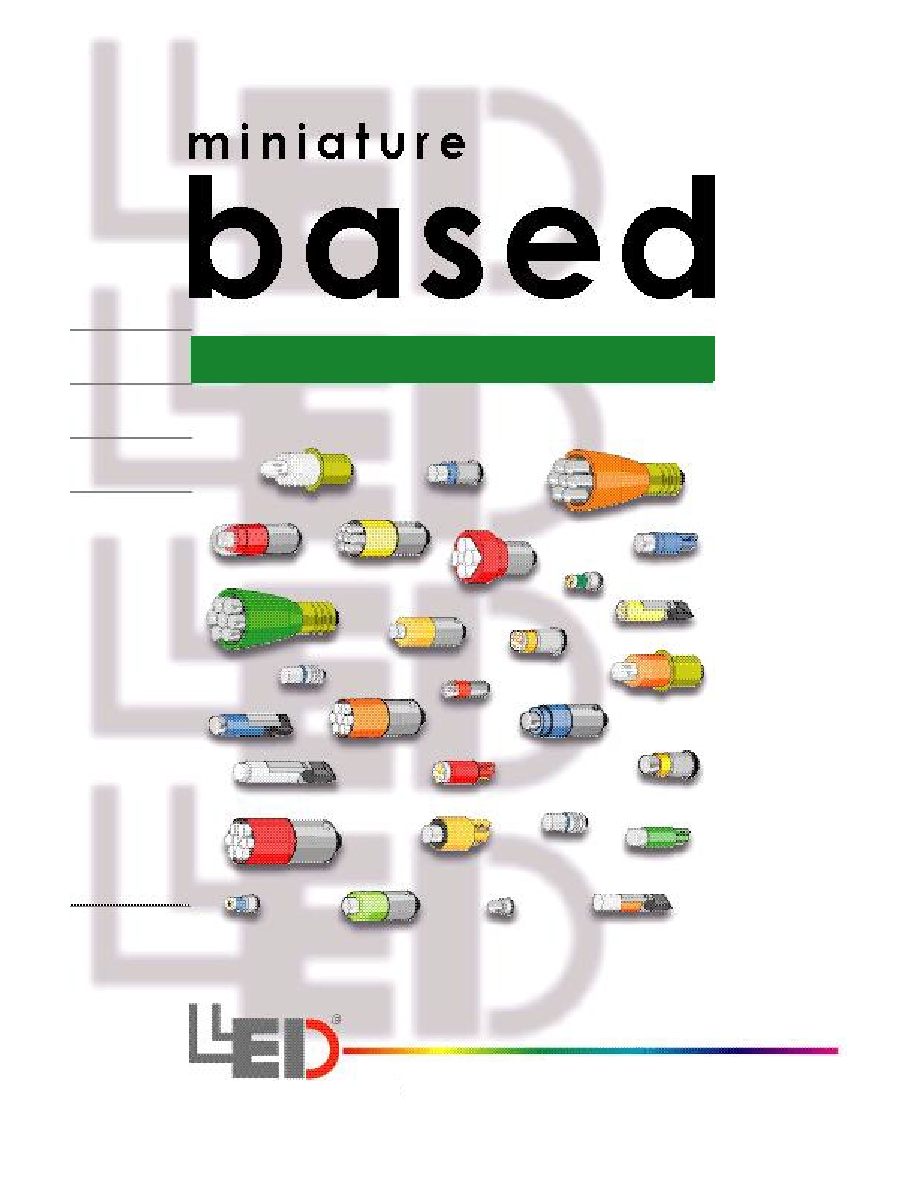
M i n i a t u r e B a s e d L E D L a m p s
LED
TRONICS, INC.
THE FUTURE OF LIGHT
23105 Kashiwa Court, Torrance, CA
90505
Phone: (800) 579-4875 or (310) 534-
1505
Fax: (310) 534-1424
E-mail: webmaster@ledtronics.com
Website: www.ledtronics.com
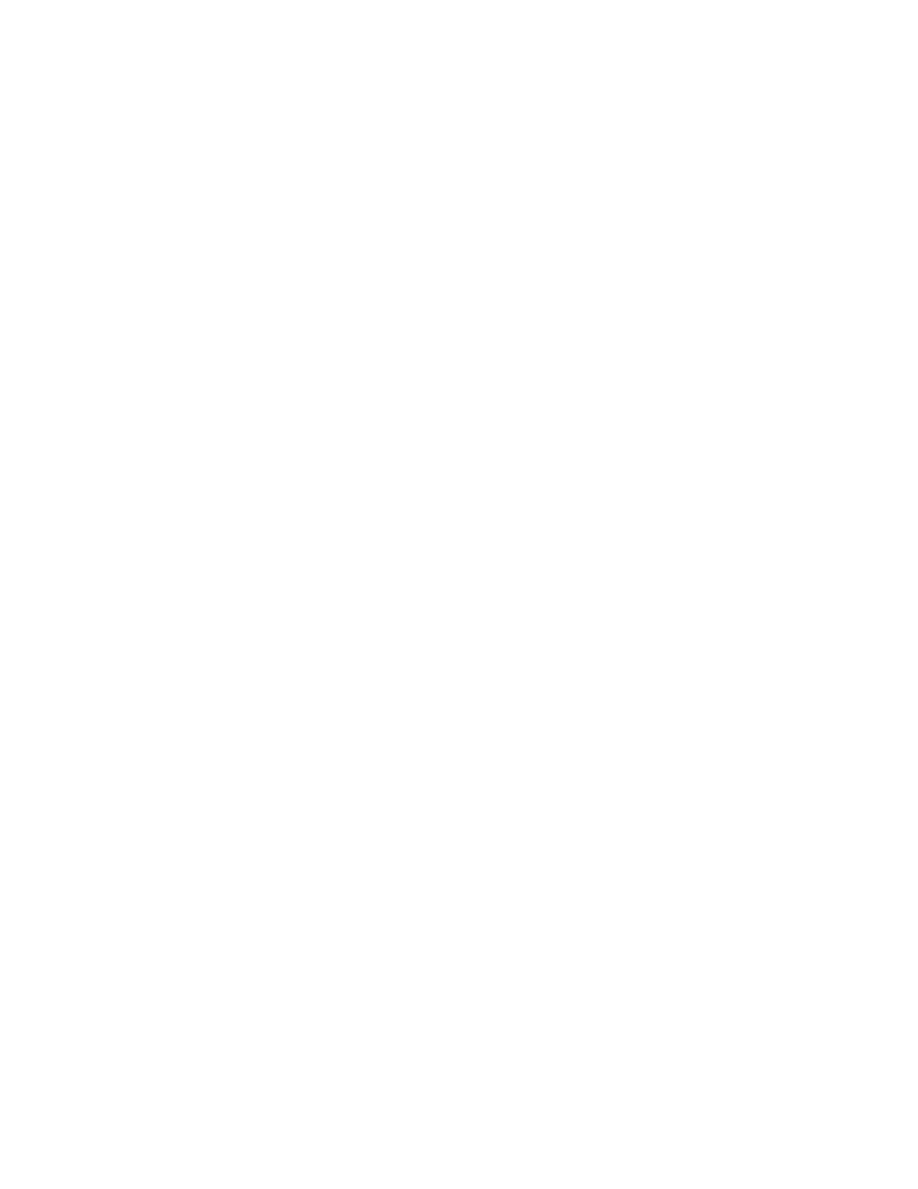
Once limited to simple status indicators, Light Emitting Diodes (LEDs) now play prominent
roles in back lighting, panel indication, decorative illumination, emergency lighting, animated
signage, etc.... The emergence of LEDs as a viable alternative to incandescent lighting can be
attributed to new manufacturing technologies, packaging innovations and an increasing
number of colors. These factors along with the growing awareness of the advantages of LEDs
(e.g., a life span measured in years not hours, vivid sunlight-visible colors and low power
requirements) have engineers, product designers, purchasing agents and component vendors
viewing LEDs in a whole new light.
For many applications LED lamps are superior to incandescent lighting. So why is it that in
tens of millions of switches, indicators, control panels, signs, annunciators, displays, decor
lights and dozens of other applications, design engineers still specify incandescent
technology? It might be that they're just a few years behind what's really happening in LED
illumination.
Although advances made in LED technology in the past few years have dramatically
broadened the applications for these rugged little light sources, it wasn't that long ago that red
was the only "daylight-visible" colored LED. And that wasn't the only thing limiting their use!
Unlike incandescent bulbs that give off the full spectrum of light in a spherical pattern, LEDs
emit a focused beam of a single wavelength (color) in only one direction, in a variety of angles.
For many applications, such as indicators or switch illuminators, this is not a problem, but it
took the development of multi-chip arrays and high-flux LED chips to begin to achieve the
effect of an incandescent filament.
Major advancements in LED technology have taken place in recent years such as
development of new "doping" technologies that increase LED light output by as much as 20
times over earlier generations, and allow the production of daylight-visible LEDs in virtually any
color of the spectrum. In addition to red, yellow, and amber/orange, LEDs are now available in
many colors from leaf green to ultra blue. Even white light, long thought to be an impossibility,
is now available in three different shades as a light-emitting diode.
The efficiency of LEDs is most apparent in applications requiring color. Light from a typical
incandescent bulb must be filtered so that only light from a particular part of the spectrum
(e.g., red, amber or green, etc...) for example--is visible. While LEDs deliver 100 percent of
their energy as colored light, incandescent bulbs waste 90 percent or more of their energy in
light blocked by the colored lens or filter. Incandescent bulbs also waste 80 percent to 90
percent of their energy on heat generation to reach the temperature for which (Kelvin scale)
they are designed.
The point is that what was once a fairly marginal light source isn't marginal any more. In many
applications, LEDs exceed the energy available from incandescent bulbs and offer significant
additional benefits making LED clusters and lamps as friendly to the environment as they are
to the operating budget.
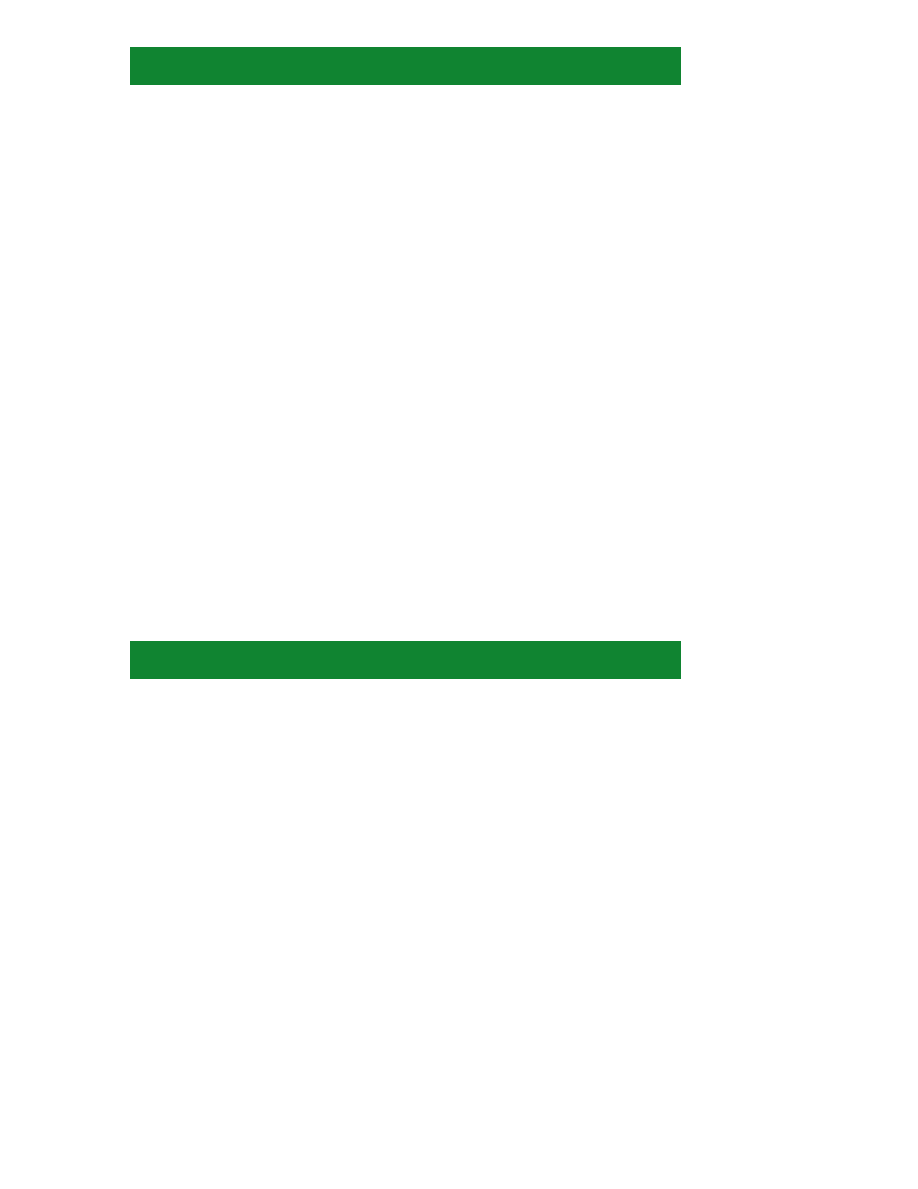
Description
Application Notes. . . . . . . . . . . . . . . . . . . . . . . . . . . . . . . . . .
`uestionnaire. . . . . . . . . . . . . . . . . . . . . . . . . .
T1 (3mm) Sub-Midget Based LEDs. . . . . . . . . . . . . . . . . .
T1 (3mm) Sub-Midget Bi-Pin Based LEDs. . . . . . . . . . . .
T1-1/2 (4.5mm) Midget Wedge Based LEDs. . . . . . . . . .
T1-3/4 (5mm) Midget Wedge Based LEDs. . . . . . . . . . . .
T1-3/4 (5mm) Midget Flange Based LEDs. . . . . . . . . . . .
T1-3/4 (5mm) Midget Groove Based LEDs. . . . . . . . . . . .
T1-3/4 (5mm) Midget Screw Based LEDs. . . . . . . . . . . . .
T1-3/4 (5mm) Midget Bi-Pin Based LEDs. . . . . . . . . . . . .
T3-1/4 (9mm) Miniature Based LED Lamps. . . . . . . . . . .
T3-1/4 (9mm) Miniature Wedge Based LEDs. . . . . . . . . .
T3-1/4 (9mm) Miniature Scew Based LEDs. . . . . . . . . . .
S6 Candelabra Screw Based LEDs. . . . . . . . . . . . . . . . . .
T5.5K European Telephone Slide Based LEDs. . . . . . . .
T6.8 European Telephone Slide Based LEDs. . . . . . . . .
T2 ANSI #5 Telephone Slide Based LEDs. . . . . . . . . . . .
T2 ANSI #2 & #3 Telephone Slide Based LEDs. . . . . . . .
T2 #1 Telephone Slide Based LEDs. . . . . . . . . . . . . . . . . .
LED Color Chart. . . . . . . . . . . . . . . . . . . . . . . . . . . . . . . . . . .
Page
4
5
6
7
8
9
10
11
12
13
14≠17
18≠19
20
21≠22
23
24
25
26
27
28
Series
1SB200
1SBF200
2SB200
2SB206
2SBF200
5SB200
5SB206
5SBF200
55KSB200
55KSB206
55KSBF200
68SB200
68SB206
68SBF200
B3127
B3206
B321
BF304
BF3126
BF3127
BF321
BM326
BN306
BN307
BN309
BP120
Page
27
27
26
26
26
25
25
25
23
23
23
24
24
24
17
17
17
14,15,16,17
14,15,16,17
14,15,16,17
14,15,16,17
17
17
17
17
7
Series
BP121
BP122
BP124
BP200
BP203
BPF120
BPF200
BSD1174
F120
F121
F122
F124
F200
F206
FF120
FF200
FFL200
FL206
G200
G206
GF200
HL230
HLC2020
HLC310
HLD310
RFI EMI
Page
7
7
7
13
13
7
13
27
6
6
6
6
10
10
6
10
10
10
11
11
11
6
6
6
6
6
Series
S200
S206
S321
SF200
SF321
SF464
SL424
SL464
SL467
SLF461
SLF464
SLF467
WF150
WF200
WF3126
WF3127
WF321
Page
12
12
20
12
20
21,22
22
22
22
21,22
21,22
21,22
8
9
18,19
18,19
18,19
Table of Contents
Series Number ≠ Page Number
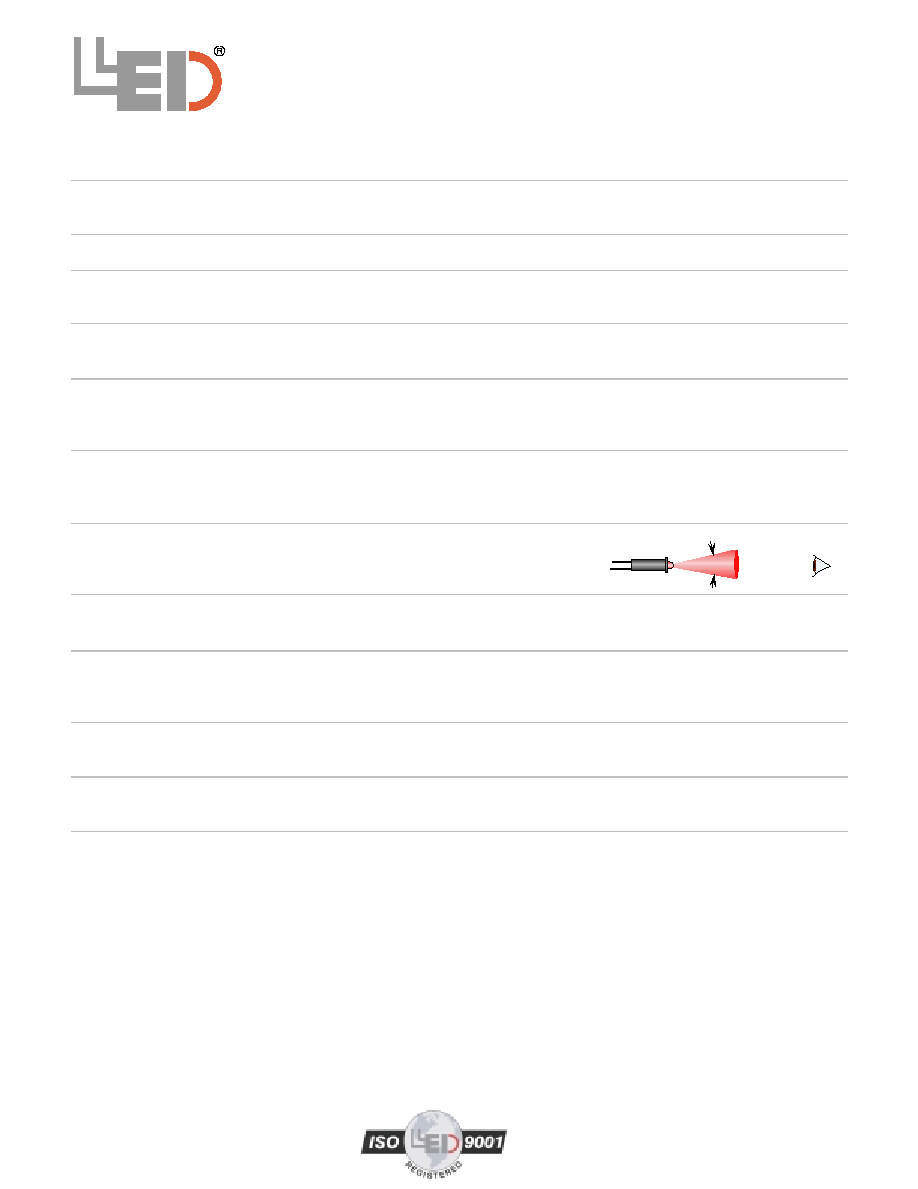
Application Notes
Will the Panel LED replace
another manufacturers parts?
Mounting Type?
Mounting Diameter & Panel
Thickness?
Operating Voltage and
Polarity?
Terminal Type?
Viewing Distance?
Viewing Angle?
LED Color?
Lens Type?
Ambient Lighting?
Potential Quality and
Target Price?
Dialight, Data Display Products, Industrial Devices Inc., etc...
If so, what is the part number?
Snap-in, Snap-in with mount clip, Bolt-on, Relampable, etc...
What is the hole diameter into which the lamp assembly
must fit? How thick is the wall of the panel?
Actual open line voltage? AC or DC? Does it fluctuate?
Indicate the Minimum/Maximum values?
Are solid wire (0.02 sq.), pigtail flexible wire lead (24AWG), quick
disconnect (3/16 rectangular), solder lug, turret, or screw-on type
terminals preferred?
How far is the operator / technician when the indicator
must be visible? 5 to 10 feet, 20 to 50 feet, 100 to 200 feet,
500 to 1000 feet?
0 to 12 degrees ≠ Narrow Beam
30 to 60 degrees ≠ Medium Beam
100 to 160 degrees ≠ Wide Beam
Ultra Red, Hi-Efficiency Red, Standard Red, Orange, Yellow, Cool
white, Ultra Green, Aqua Green, Blue
Diffused lenses are used in applications where direct viewing or
indication is needed. Clear lenses are used in application where
illumination is needed. Is the lens fluted?
Standard office lighting. High ceiling factory lighting.
Indirect sunlight. Direct sunlight
How many pieces are required within a given time frame?
How much budgetary funding is allowed for this item or project?
Viewing Angle
LED
TRONICS, INC.
THE FUTURE OF LIGHT
23105 Kashiwa Court, Torrance, CA 90505
Phone: (800) 579-4875 or (310) 534-1505
Fax: (310) 534-1424
E-mail: webmaster@ledtronics.com
Website: www.ledtronics.com
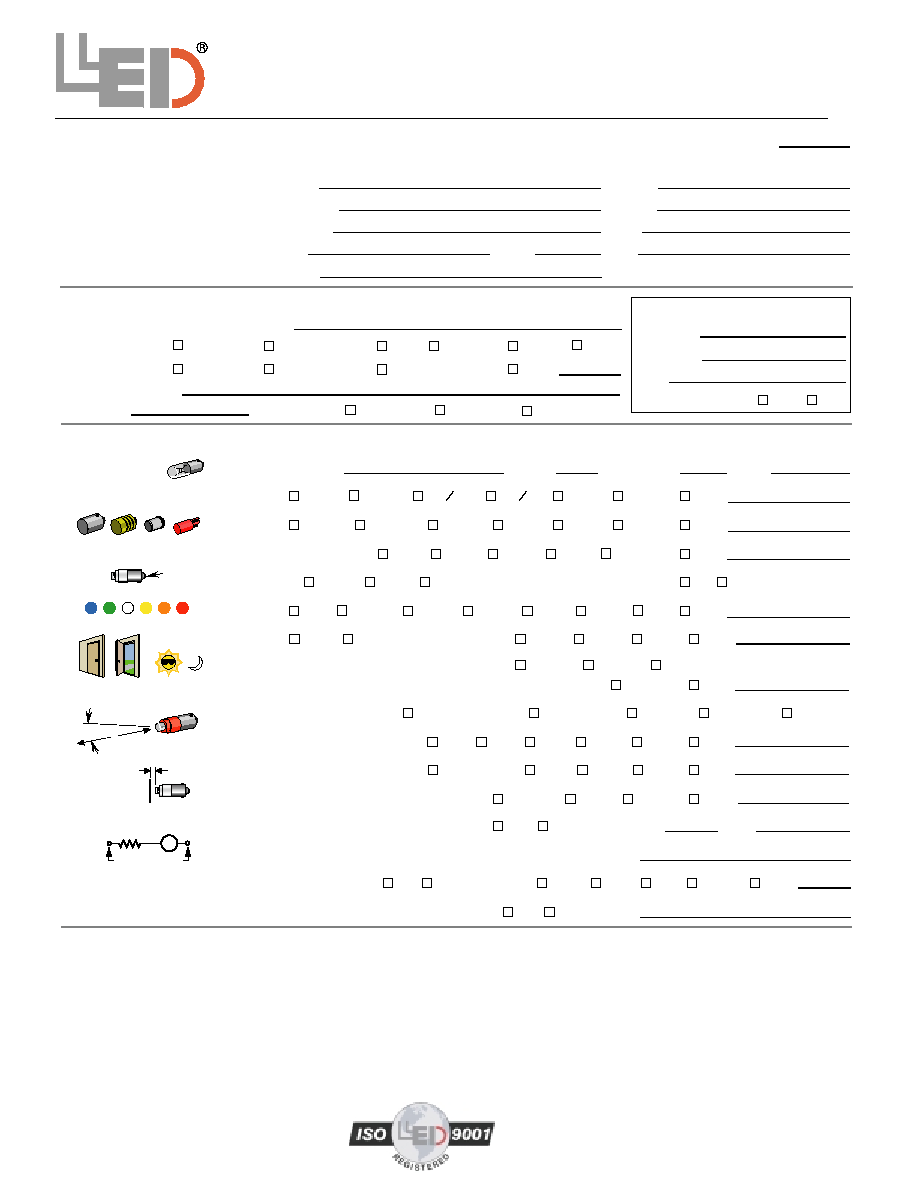
Based LED Questionnaire
About your company
About your application
What does your company manufacture
Is your company
Total annual quantity
Target price
Time frame
Operating voltage (max)
Lens color
Lens type
Ambient lighting conditions
Maximum viewing distance desired
Maximum viewing angle desired
Distance between top of lamp and lens/filter
Is an external resistor in series with the lamp
What is the source voltage if higher than the operating voltage of the lamp
Additional Notes/Sketches
S O U R C E V O LT A G E
L E D
L A M P
E X T R E S
Incandescent/LED No.
mAmps
Design Volts
MSCD
5V
12V
24V
28V
120VAC
Other
Voltage (type)
AC
DC
Bipolar
Red
Orange
Amber
Yellow
White
Green
Blue
Center
contact
+
≠
Govt/Military
Govt Contractor
OEM
Distributor
Utility
MRO
Other
R&D
Clear Diffused
Other
Base size
T1
T2
S6
T1
3
4
1
T3
4
Other
15mm
Base type
Lens size
Indirect sunlight
Direct sun
Office
Lowlight
Darkroom
1 ft
5 ft
10 ft
20 ft
50 ft
Other
Straight on
30°
60°
90°
Other
Other
1/8"
1/4"
1/2"
Yes
No
If yes, Ohms
Polarity of center contact
Requirement is for
Replacement
New Application
Other
Flange
Wedge
Groove
Bi-pin
Bayonet
Screw
Watts
Would like updated literature
Yes
No More info on:
Based
PCB
Panel
Discrete
Other
Immediate
3 months
6 months
GAP
Date
Indoor
Outdoor
Applicable statutory and regulatory requirements
Yes
No
Doc. No.
?
¯
SIC code:
Originator:
Current Customer
Rep:
For internal use only
Yes
No
About you
Name:
Phone: ( )
Address:
M/S:
City:
State:
Zip:
Company:
Fax:
( )
E-Mail:
16mm
22mm
30mm
Other
Lens shape
Circular
Square
Rectangular
Other
Jelly-jar
The following information assists
LEDtronics in determining the
most appropriate FREE LED
product SAMPLE. Fax to
(310) 534-1424 for fast response.
LED
TRONICS, INC.
THE FUTURE OF LIGHT
23105 Kashiwa Court, Torrance, CA 90505
Phone: (800) 579-4875 or (310) 534-1505
Fax: (310) 534-1424
E-mail: webmaster@ledtronics.com
Website: www.ledtronics.com




